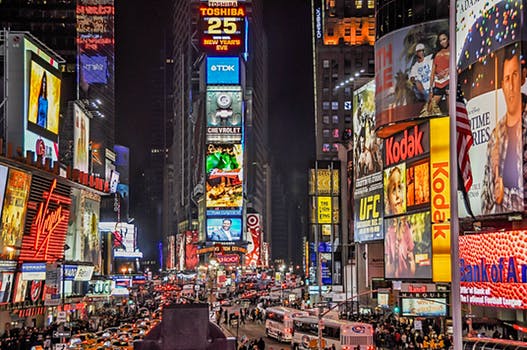
A smart city is an exciting and rapidly expanding research area. Smart cities is a broad topic that includes transportation, energy distribution, data communications and all technology in a sense that it will become transparent to the normal user and regular citizen. This approach can be obtained by expanding the cloud and the internet of things, (IoT) to the environment surrounding us.
In the latest decades as we know the humans worked hard to improve the level of life style, these improvements include most of life aspects as education, health, management and others. In the next generation, there is a main question what is after that. Actually, if will depend on human we need to wait a lot to find new things with satiability level the previous achievements, therefore the answer here is convert the some mission to smart machines to monitor and manage other machines
SMART CITIES
- Smart Parking: Monitoring of parking spaces availability in the city.
- Structural health: Monitoring of vibrations and material conditions in buildings, bridges and historical monuments.
- Noise Urban Maps: Sound monitoring in bar areas and centric zones in real time.
- Smartphone Detection: Detect iPhone and Android devices and in general any device which works with WiFi or Bluetooth interfaces.
- Electromagnetic Field Levels: Measurement of the energy radiated by cell stations and and WiFi routers.
- Traffic Congestion: Monitoring of vehicles and pedestrian levels to optimize driving and walking routes.
- Smart Lighting: Intelligent and weather adaptive lighting in street lights.
- Waste Management: Detection of rubbish levels in containers to optimize the trash collection routes.
- Smart Roads: Intelligent Highways with warning messages and diversions according to climate conditions and unexpected events like accidents or traffic jams.

SMART ENVIRONMENTS
- Forest Fire Detection: Monitoring of combustion gases and preemptive fire conditions to define alert zones.
- Air Pollution : Control of CO2 emissions of factories, pollution emitted by cars and toxic gases generated in farms.
- Snow Level Monitoring: Snow level measurement to know in real time the quality of ski tracks and allow security corps avalanche prevention.
- Landslide and Avalanche Prevention: Monitoring of soil moisture, vibrations and earth density to detect dangerous patterns in land conditions.
SMART WATER
- Potable water monitoring: Monitor the quality of tap water in cities.
- Chemical leakage detection in rivers: Detect leakages and wastes of factories in rivers.
- Swimming pool remote measurement: Control remotely the swimming pool conditions.
- Pollution levels in the sea:Control realtime leakages and wastes in the sea.
- Water Leakages: Detection of liquid presence outside tanks and pressure variations along pipes.
- River Floods:Monitoring of water level variations in rivers, dams and reservoirs.
- Earthquake Early Detection: Distributed control in specific places of tremors.
SMART METERING
- Smart Grid: Energy consumption monitoring and management.
- Tank level: Monitoring of water, oil and gas levels in storage tanks and cisterns.
- Photovoltaic Installations: Monitoring and optimization of performance in solar energy plants.
- Ater Flow: Measurement of water pressure in water transportation systems.
- Silos Stock Calculation: Measurement of emptiness level and weight of the goods.
- Radiation Levels: Distributed measurement of radiation levels in nuclear power stations surroundings to generate leakage alerts.
- Explosive and Hazardous Gases: Detection of gas levels and leakages in industrial environments, surroundings of chemical factories and inside mines.
Smart Cities Example
- Seattle, US
The US city of Seattle is partnering with the University of Washington to address a number of urban challenges, ranging from earthquake preparedness and transportation to carbon emission reduction, which is a key focus area because during work days, there are an additional 100,000 people in downtown Seattle.
The city has been using analytics to reduce carbon emissions among some 45 percent of the buildings. Seattle has also implemented an adaptive transportation management system, enabling traffic lights to adapt to changing road and weather conditions. In collaboration with the University of Washington, the city of Seattle has implemented RainWatch, a project that monitors precipitation in real time, enabling the city to send out warnings when there’s a chance of flooding in order to keep citizens and infrastructure safe.
Then there’s smart park watering projects that ensure efficient water use. This year, the city is implementing 800 body cameras for law enforcement officers and it’s piloting ShotSpotter’s gunshot detection technology to help determine where gunshots were fired. To improve its tech infrastructure, the city also recently opened a new data centre, replacing the previous one that nearly crashed in 2012. The new data centre can withstand natural disasters such as earthquakes.
- BARCELONA, SPAIN
Named European Capital of Innovation in 2014, Spain’s second-biggest city, Barcelona, is involved in over one hundred smart city projects and is a global leader in its extensive use of the Internet of Things. Smart city projects range from smart lighting, the promotion of charging infrastructure for electric vehicles, and Wi-Fi in public transportation systems and public places. Barcelona provides global leadership by hosting the annual Smart City Expo World Congress – supporting the growth of the smart cities industry.
The city’s Telecare service looks after its more than 70.000 elderly and disabled citizens by proactively checking on them with the use of sensor technology. Barcelona has smart LED streetlights throughout that are only activated when they detect movement. This leads to energy savings of no less than 30 percent. The sensors in the street lights also collect environmental data while rain and humidity sensors determine the amount of water required to irrigate public parks. Smart garbage bins are only emptied when full and smart parking systems show vehicles to free parking spots, reducing carbon emissions and traffic congestion.
Digital bus stops provide real time overviews of bus times, USB charging ports as well as free Wi-Fi. The city’s Smart Urban Platform aims to solve urban challenges by bringing together data from social networks, the city’s information systems and the open-source Sentilo sensor network.
